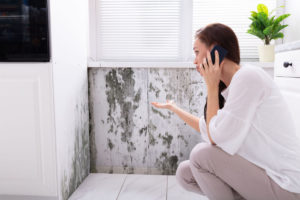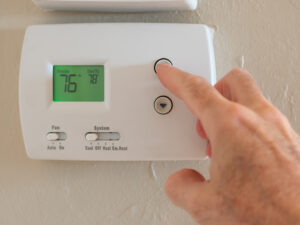Mold. It’s a dreaded term for any property owner, especially when you aren’t sure how to pinpoint how long it’s been there and where it’s coming from. Mold can also pose significant health risks to you and anyone in your house, adding to its annoyance. Mold thrives in moist environments and can grow on various surfaces, from walls and ceilings to furniture and carpets. So, how do you know that your home has a mold problem? Early detection and prevention are key, and yet many homeowners go weeks and sometimes months without catching signs right in front of them. We at RepairUSA happen to be experts in mold remediation, and we can highlight some of the common signs of mold issues so you can remove them ASAP and enjoy clean air in your home.
What Causes Mold?
Mold spores are everywhere, waiting for the right conditions to grow. They need moisture, warmth, and a food source, such as wood, paper, or fabric, to start their development. Common sources of indoor moisture that can lead to mold growth include:
- Leaks from roofs, windows, or pipes
- Flooded areas
- Condensation from high humidity or cold surfaces
- Poor ventilation
Bathrooms and kitchens are particularly prone due to their high humidity levels. Basements and attics may also harbor mold if they’re not properly insulated or ventilated.
So, when should you call a professional? Knowing when to schedule a mold remediation service can prove tricky since mold can grow in hard-to-reach areas that are out of sight and out of mind. With that being said, that doesn’t mean it’s impossible to get in front of the issue; here are some signs that your home has a mold problem:
A Rotten Smell
One of the earliest signs of mold is a distinctive musty odor. This smell is often described as earthy, damp, or rotten, similar to wet socks or decaying wood. If you notice an unusual smell in certain areas of your home but can’t see any visible mold, it’s worth investigating further. Mold can hide behind walls, under floors, or in other unseen places.
Problems Around Your Water Heater
Mold loves to grow in dark and damp environments away from sunlight and prying eyes that can put a stop to it before it worsens. The areas around your water heater are a prime place for unchecked mold growth due to some key factors:
- It’s in a Hard-to-Reach Spot: Normally tucked away in a corner of your basement, you can sometimes go years without taking a good look at the areas around your water heater.
- Leaks Are Hard to Spot: Unless you’re explicitly looking for a leak, they can be tough to spot from a distance. If the leak is subtle enough, it can cause mold to begin to grow. If the leak is hard to spot with the naked eye, look for condensation on the floor and walls around your heater.
Spots on Your Clothes
Finding spots on your clothes, especially those stored in closets or drawers, can indicate a mold problem. These spots might appear as small, discolored patches that may or may not wash out. Clothes stored in damp conditions are particularly susceptible to mold growth, which can damage the fabric and cause an unpleasant odor.
Furniture Filled With Fungal Growths
Mold doesn’t discriminate when it comes to the surfaces on which it grows. Furniture, especially those made of wood or upholstered with natural fibers, can harbor mold if exposed to moisture. Check the undersides, back panels, and hidden crevices of your furniture for any signs of fungal growth. If you find mold on your furniture, it’s important to clean it promptly and address the source of moisture. In some cases, professional cleaning or restoration may be necessary to save the piece.
Moldy Carpets
Carpets can easily trap moisture, making them a prime breeding ground for mold. If your carpet feels damp, smells musty, or shows visible signs of discoloration, it’s likely affected by mold. Regular vacuuming and deep cleaning can help, but severely mold-infested carpets may need to be replaced.
Symptoms of Allergies or Asthma
Mold can trigger or exacerbate allergy and asthma symptoms in sensitive individuals. If you or your family members experience the sudden onset or worsening of respiratory issues, such as sneezing, coughing, wheezing, or difficulty breathing, it could be related to mold exposure. Pay attention to whether these symptoms improve when you’re away from home, as this could also indicate a larger indoor air quality issue.
Warped Paint
Peeling, bubbling, or cracking paint is often a sign that there’s moisture in your walls. While this doesn’t always mean mold is present, it creates an environment where mold can thrive. If you notice any changes in your wall paint, investigate the cause and find a solution to address any underlying moisture problems before things get worse.
You’ve Had a Recent Event That Caused Significant Water Damage
Events like flooding, severe storms, or burst pipes can saturate your home with water, creating ideal conditions for mold growth. Even after removing the water, residual moisture in walls, floors, and furnishings can lead to mold if not properly dried and treated. Professional water damage restoration services can make sure that your home is properly dried and restored, leaving no area where mold can thrive.
What to Do When You Suspect Mold Damage? Call the Pros at RepairUSA
If you suspect your home has a mold problem, act quickly. Mold can spread rapidly, causing further damage to your property and potentially harming your health. At RepairUSA, we specialize in detecting and removing mold to improve your indoor air quality in Jonesboro, AR. Our team uses advanced techniques and equipment to identify mold sources, assess the extent of the damage, and implement effective remediation strategies. So don’t let mold take over your home. Take back control with RepairUSA today!



